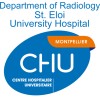
Non-invasive Characterization of the Mechanisms of Atrial Fibrillation Maintenance
Atrial FibrillationCurrently available antiarrhythmic drugs for the treatment of atrial fibrillation (AF) have a limited efficacy and often cause long-term side effects. Pulmonary vein isolation is the therapy of choice in drug-refractory patients. Recent studies have shown that ablation have a greater efficacy in patients in whom AF is maintained hierarchically and after ablation of rotors. The non-invasive identification of specific mechanism of AF maintenance in each patient could allow the selection of the most appropriate treatment.

Physiotherapist Led Group-exercise Compared Physical Activity on Prescription, a 3 Months Follow-up...
Atrial FibrillationTo investigate the effect of exercise or PAP prescription 3 months after completion of the study "Should elderly patients with atrial fibrillation be offered physiotherapist group exercise or can physical activity on prescription (PAP) be used as an alternative?" regarding level of physical fitness, physical activity, heart rate and health related quality of life (HR-QoL). Also if any of the investigated variables can predict the possible change in physical fitness.

BIO.MASTER.BioMonitor 2 Study
TachyarrhythmiaAtrial Fibrillation1 moreThe objective of the study is to confirm safety and efficacy of the BioMonitor 2. The data is collected to support the regulatory approval of this product in countries outside the CE region.

Multi-Channel Esophageal ECG Signal Classification
Atrial FibrillationAtrial Function3 moreThis study is designed to prove new methods to enable the automated analysis of esophageal electrocardiography (eECG) signals in long-term measurements as well as the detection of atrial fibrillation. The investigators hypothesis is that eECG signals allow the reliable atrial and ventricular ECG signal distinction and the detection of atrial fibrillation. Therefore 14 patients with arrhythmias and 6 cardiac healthy subjects are asked to take part in this study. On each subject an esophageal ECG and a simultaneous standard surface ECG will be taken for about half an hour. Patient undergoing a cardiac catheter ablation during their current hospitalization will be further asked to allow access to the invasively obtained measurements (i.e. atrial potential map) to further improve the understanding of the eECG signals.

Utilizing a Novel Method to Map Sources of Atrial Fibrillation
Atrial FibrillationThis is an electrogram mapping study that tests the ability of a new signal processing technique called electrogram morphology recurrence mapping to locate drivers in participants with atrial fibrillation. This study will also test the hypothesis that there are non-invasive markers that can predict driver location. Electrogram mapping will be performed in participants undergoing ablation for persistent atrial fibrillation. These participants will have a cardiac MRI and 12-lead ECG prior to the ablation procedure.

Unipolar Atrial Electrogram Modification Combined to the Contact Force Sensing Technology for Pulmonary...
Atrial FibrillationArrhythmiaProspective observational multicentric study evaluating the efficacy of considering unipolar signal modification during radio frequency catheter ablation of patients with symptomatic paroxysmal atrial fibrillation in France between November 2013 and January 2015. All procedures were conducted according to the standard clinical care and current guidelines. Pulmonary vein isolation was guided according to force (at least 10 grams) and application vector (perpendicular to the wall) developed until the atrial unipolar electrogram recording became a complete positive signal. Patients were discharged from hospital free of any anti-arrhythmic drugs. Recurrence of arrhythmias at 12 months (primary outcome) was assessed by continuous 48-hour Holter at 1, 3, 6, 9 and 12 months post-catheter ablation.

Esophageal 3D Mapping System for Cardiac Arrhythmias
ArrhythmiaAtrial Fibrillation5 moreThe aim of the study is to develop and validate a novel esophageal mapping system to improve the diagnostics of cardiac arrhythmias. Using a newly designed esophageal ECG catheter, esophageal ECGs (eECGs) will be recorded in 40 patients during an electrophysiological (EP) study and/or ablation procedure and in 12 healthy volunteers. In parallel acquired intracardiac electrograms will serve as reference for the developed mapping systems accuracy. Additionally, the esophageal mapping system will be compared to that of the standard 12-lead surface ECG in regard to its diagnostic performance.

Left Atrial Appendage Occlusion Guided by 3D Printing
Atrial FibrillationLeft atrial appendage closure (LAAC) was approved by the ESC guidelines as a stroke prevention alternative to warfarin for patients with nonvalvular atrial fibrillation in patients at high risk of bleeding (IIbB). Although the overall LAAC benefice, in term of prevention of stroke or embolisme and decresing the anticoagulant-related risk of bleeding is already demonstrated, however the procedure success and safety, critically depends on understanding LAA anatomy and adequate pre-procedure planning. 3D-printed patient-specific adaptive and flexible LA models have demonstrated in a previous study an improving in LAAO device sizing, a better pre-procedural planning of the optimal trans-septal puncture site, by incorporating all anatomical variations and an improuving patient outcomes by reducing procedure time and number of prostheses employed per patient. This technique is now used in several surgical centers in France and large prospective evaluation of the practice is necessary.

Post-approval Study of Percutaneous Left Atrial Appendage Closure ( FLAAC-2 )
Atrial FibrillationPatients with atrial fibrillation are at significant risk of thrombus formation in the left atrial appendage, which can lead to a stroke or systemic embolism. This risk justifies first-line prescribing of long-term oral anticoagulant therapy in these patients. Percutaneous left atrial appendage closure, is a new interventional cardiology technique for patients at high risk of stroke related to atrial fibrillation in whom long term anticoagulation therapy cannot be conducted. This procedure involves implantation of an occlusion device into the left atrial appendage to close it and prevent migration of thrombotic material that can cause distant embolism. Closure of the left atrial appendage avoids long term prescription of anticoagulants while protecting patients against the risk of systemic embolism and stroke. In 2016, two devices developed for transcutaneous closure of the left atrial appendage (WATCHMAN, Boston Scientific, AMPLATZER CARDIAC PLUG, S. Jude Medical and its evolution AMPLATZER AMULET) were included in the list of products reimbursable in France. The French national authorities have requested the realization of a register whose objectives will be to evaluate: The efficiency and safety of implanting devices in France The type and duration of antithrombotic treatment prescribed after left atrial appendage closure

PRescriptiOn PattERns Of Oral Anticoagulants
Atrial FibrillationAtrial fibrillation is the major cause of acute ischemic stroke. The risk of stroke was shown to decline by oral anticoagulant therapy. The investigators intended to evaluate appropriate use of anticoagulants in non-valvular AF patients.
